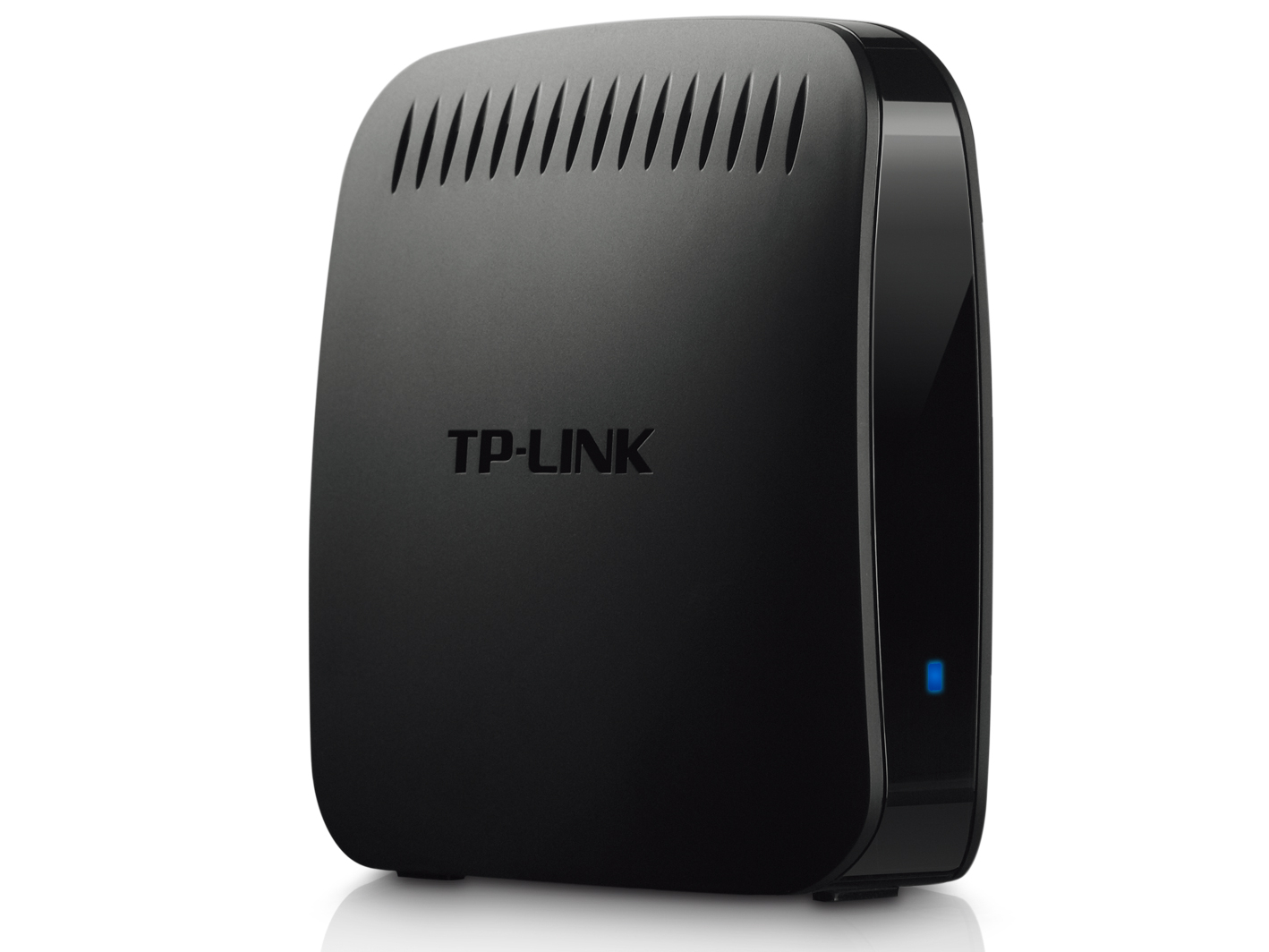TP-Link Launches N600 Entertainment Adapter
On Monday, TP-Link launched the N600 Entertainment Adapter (TL-WA890EA), a media bridge that allows Ethernet-based devices to have wireless access to the network. The device is available now for a not-too-shabby price of $59.99 USD.
According to the specs, the "Entertainment Adapter" provides Wireless N speeds of up to 300 Mbps on the 5 GHz band, and up to 300 Mbps on the 2.4 GHz band. On the back are four 10/100 Ethernet ports, allowing the user to plug in a game console, Blu-ray player, set-top-box and other "wired" devices that don't have Wi-Fi capabilities.
This media bridge is definitely ideal for devices that are on the other side of the house, residing on the outskirts of the wireless network, for example. The media bridge essentially acts like one large wireless adapter, except in this case, there are four connections made with the router instead of just one.
Complimenting this media bridge would be TP-Link's N600 Wireless Dual Band Gigabit Router (TL-WDR3600), which provides the same speeds on both bands as the Entertainment Adapter. This router also provides Gigabit Ethernet ports, two USB ports for sharing media and a printer, guest network access and more.
There's also the N600 Wireless Dual Band Router (TL-WDR3500), which doesn't have Gigabit Ethernet ports, and only one USB port. This router has guest access as well as an on/off switch so that users can save energy by turning off the router when it's not in use (like in a vacation home). Other features include a one-button setup and IP Quality of Service.
For more information about TP-Link's dual-band wireless solutions for the home and office, head here.
Get Tom's Hardware's best news and in-depth reviews, straight to your inbox.

Kevin Parrish has over a decade of experience as a writer, editor, and product tester. His work focused on computer hardware, networking equipment, smartphones, tablets, gaming consoles, and other internet-connected devices. His work has appeared in Tom's Hardware, Tom's Guide, Maximum PC, Digital Trends, Android Authority, How-To Geek, Lifewire, and others.
-
Haravikk I don't see the point of muddying their lineup like this; while having gigabit ethernet ports may be a little more expensive, it shouldn't be so much that you couldn't just have that as the only model, and give it access point options in its settings. Bridging and extending WiFi is a losing battle anyway though, you may as well buy PowerLine adaptors (which TP-Link do as well) and wire everything up, then setup only a centrally located WiFi router for any mobile devices, or more than one if necessary, but either way with PowerLine handling the bulk of the traffic as it's as convenient as setting up WiFi, but so much more reliable.Reply -
boytitan2 ReplyI don't see the point of muddying their lineup like this; while having gigabit ethernet ports may be a little more expensive, it shouldn't be so much that you couldn't just have that as the only model, and give it access point options in its settings. Bridging and extending WiFi is a losing battle anyway though, you may as well buy PowerLine adaptors (which TP-Link do as well) and wire everything up, then setup only a centrally located WiFi router for any mobile devices, or more than one if necessary, but either way with PowerLine handling the bulk of the traffic as it's as convenient as setting up WiFi, but so much more reliable.
That powerline stuff is worse. Anyways it is 2014 it is no longer 2006 wireless can be used fine now no longer is there a need for a bride either. -
Haravikk Reply
Care to prove that? I have a dual band WiFi router that I can still barely connect to in a relatively small house, largely thanks to pretty much everyone in my street also having wireless routers (many of which are dual-band, so much for 5ghz being less cluttered) meaning that even when I do get good signal strength, packet loss and the resulting latency are still an issue. Meanwhile with 200Mbps PowerLine I get much better, more reliable speeds. Wireless is clearly better for my phone, tablet etc., but for anything that doesn't need to move, an ethernet cable to a PowerLine adapter is zero inconvenience for better results.13151630 said:That powerline stuff is worse. Anyways it is 2014 it is no longer 2006 wireless can be used fine now no longer is there a need for a bride either.
I'd still consider using just ethernet if I could, but with the floorboards in my house all seemingly running in completely different directions, some screwed down, some tongue and groove and some plain, drilling holes to get a huge cable through my house just isn't appealing at all.
